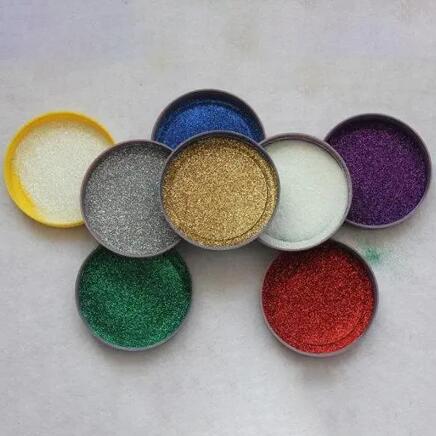Glitter and the Environment: The Rise of Eco-Friendly Sparkle
2024-07-19
Introduction
Glitter is a beloved material for adding a touch of sparkle to everything from art projects to makeup. However, its impact on the environment has become a growing concern. Traditional glitter is made from microplastics that can harm marine life and contribute to pollution. As awareness of environmental issues rises, so does the demand for eco-friendly alternatives. In this blog, we'll delve into the environmental impact of glitter and the rise of sustainable, biodegradable options.
The Environmental Impact of Traditional Glitter
Traditional glitter is primarily made from plastic, specifically polyethylene terephthalate (PET) or polyvinyl chloride (PVC). These microplastics are less than 5 millimeters in size and can easily enter waterways, where they pose a significant threat to marine life. Fish, plankton, and other aquatic organisms can ingest these particles, which can lead to physical harm, chemical contamination, and disruption of the food chain.
Additionally, the production and disposal of plastic glitter contribute to the broader issue of plastic pollution. Plastic takes hundreds of years to decompose, leading to long-term environmental damage.
The Rise of Biodegradable Glitter
In response to the environmental concerns associated with traditional glitter, many companies have started producing biodegradable glitter. These eco-friendly alternatives are made from natural, renewable materials such as cellulose, a plant-based substance derived from eucalyptus trees. Biodegradable glitter is designed to break down naturally in the environment, reducing its ecological footprint.
Benefits of Biodegradable Glitter
1. Eco-Friendly: Biodegradable glitter decomposes naturally, minimizing its impact on the environment and reducing the amount of plastic pollution in oceans and landfills.
2. Non-Toxic: Made from natural materials, biodegradable glitter is safe for both humans and wildlife. It's free from harmful chemicals found in some traditional glitters.
3. Versatile: Just like traditional glitter, biodegradable glitter comes in various colors, sizes, and shapes, making it suitable for a wide range of applications, from crafts to cosmetics.
4. Sustainable Production: The production of biodegradable glitter often involves sustainable practices, such as using renewable resources and reducing waste.
How to Use Biodegradable Glitter
Biodegradable glitter can be used in the same ways as traditional glitter. Here are some popular applications:
1. Arts and Crafts: Add sparkle to your art projects, greeting cards, and decorations without harming the environment.
2. Cosmetics: Use biodegradable glitter in makeup, body lotions, and hair products for a sustainable way to shine.
3. Events and Parties: Decorate your celebrations with eco-friendly glitter in confetti, balloons, and table centerpieces.
4. Fashion and Accessories: Incorporate biodegradable glitter into clothing, shoes, and accessories for a sustainable fashion statement.
Where to Find Biodegradable Glitter
Many companies now offer biodegradable glitter, and it's becoming increasingly available in stores and online. Look for reputable brands that clearly label their products as biodegradable and provide information about their environmental benefits.
Conclusion
As awareness of environmental issues continues to grow, so does the demand for sustainable alternatives to traditional glitter. Biodegradable glitter offers a way to enjoy the sparkle and fun of glitter while minimizing its impact on the planet. By choosing eco-friendly options, we can all contribute to reducing plastic pollution and protecting our environment for future generations. Whether you're crafting, celebrating, or adding a touch of glam to your look, biodegradable glitter lets you shine sustainably.


